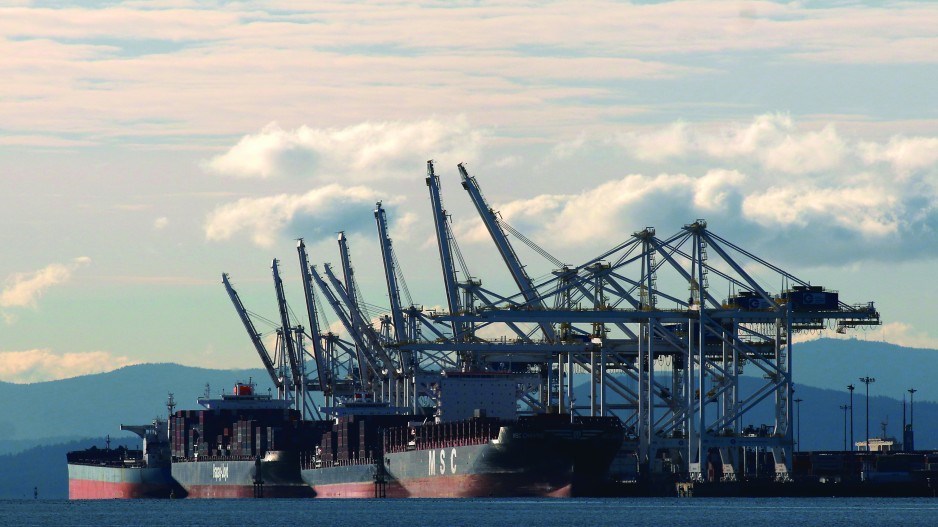The union representing Port of 91原创 dockworkers has delivered a strong thumbs-down to the 91原创 Fraser Port Authority’s (VFPA) proposed multibillion-dollar container terminal expansion project at Roberts Bank.
In a Feb. 9 open letter to Prime Minister Justin Trudeau and the federal cabinet, the International Longshore & Warehouse Union Canada (ILWU) congratulated the federal government for successfully hosting the recent COP15 environmental summit but pointed to the VFPA’s $3.5 billion Terminal 2 expansion project as running counter to COP15’s aims to halt and reverse biodiversity loss by the end of the decade.
Terminal 2, which would add 2.4 million 20-foot equivalent units (TEUs) to the port’s annual container handling capacity, would require the construction of an artificial island in what Terminal 2 opponents point out is an environmentally sensitive marine area.
The ILWU letter quotes a 2018 Environment and Climate Change Canada (ECCC) opinion that characterized the environmental impacts of the Terminal 2 expansion as permanent and irreversible.
According to the letter, the ECCC reiterated in late October 2022, that despite the port’s attempts at mitigation, “the changes predicted as a result of the Project would likely constitute an unmitigable species-level risk to Western Sandpipers, and shorebirds more generally.”
The ILWU also argues that the project’s sliding timelines and ballooning costs are a “major risk to all port tenants, operators and labour in an uncertain time.”
It also expressed concerns about Terminal 2’s automation and the subsequent job losses it would result in and the amount of money the port would need to borrow to finance the project.
The ILWU therefore argues that the federal cabinet should reject the project.
The VFPA maintains, however, that, as part of the environmental assessment process, it has committed to 82 initiatives to protect the environment if the project is approved and that Terminal 2’s environmental impact will be kept to a minimum.
The VFPA’s Terminal 2 sales pitch also projects robust transpacific container cargo growth for B.C. ports over the next 20 years. Its low-end forecast has 6.7 million TEUs being handled annually; the high end would raise that total to 9.7 million.
The port, it says, therefore needs to initiate plans to add extra container cargo handling capacity now to handle the projected increase in the future.
It also wants to provide major ocean carrier companies with a terminal operated by a company other than the two that operate B.C.’s container terminals in 91原创 and Prince Rupert.
In a written response to the ILWU letter, Duncan Wilson, the VFPA’s vice-president of environment and external affairs, claims that its Terminal 2 project “would create more than 18,000 jobs over six years and $2.3 billion in GDP, as well as more than 17,300 jobs per year (1,500 on-terminal and 15,800 off-terminal) and $3 billion in GDP annually once the terminal is operational.”
He estimated that the total annual value of trade moving through the terminal would be around $100 billion once it is running at full capacity.
Wilson added that current plans are for a semi-automated terminal, but he pointed out that the port authority does not operate terminals. The level of automation incorporated in Terminal 2 will therefore be up to whichever company is chosen to be its operator.
He also pointed out that the project’s cost will be recuperated through terminal user fees and the long-term lease of the terminal.
A decision on the Terminal 2 project, which has taken over a decade to reach federal cabinet consideration, is expected in the next few weeks.



